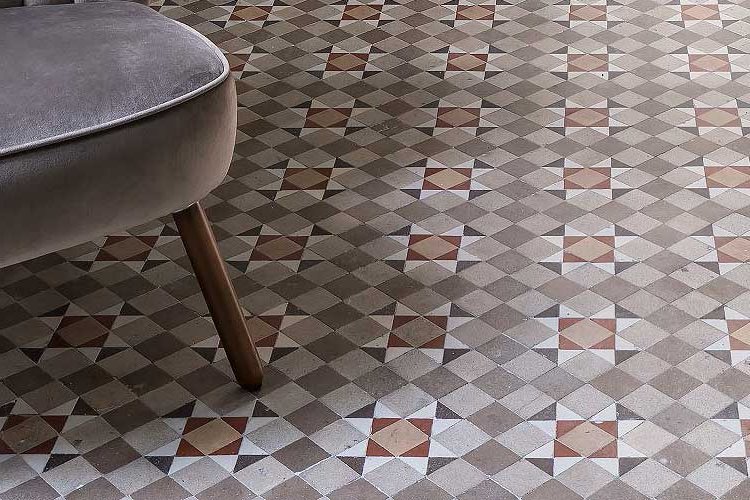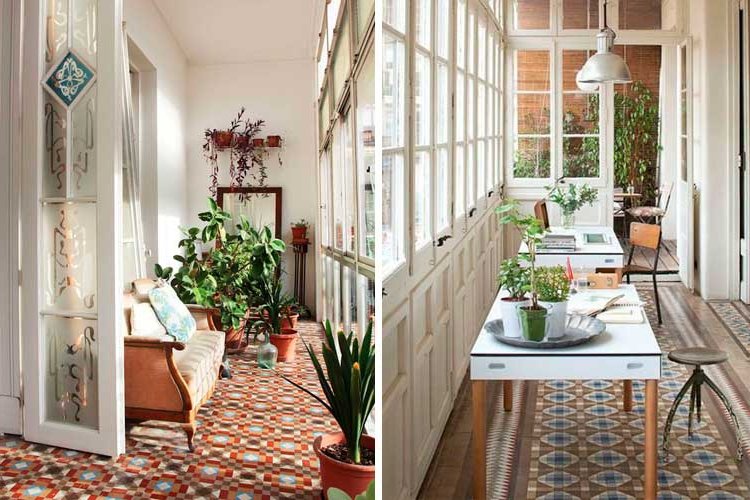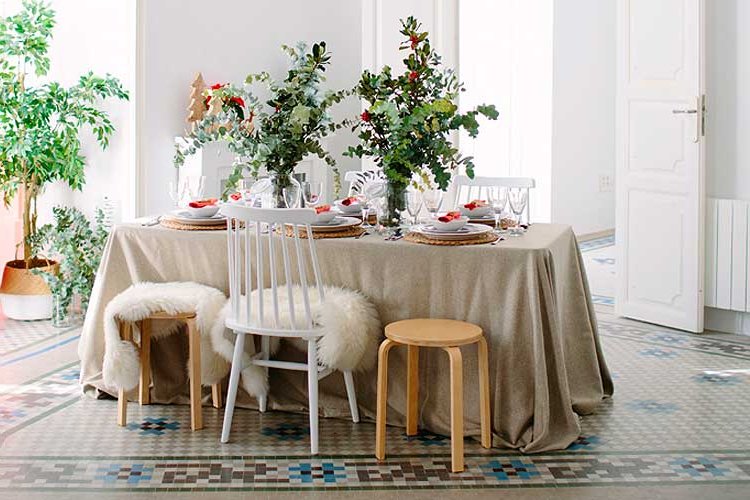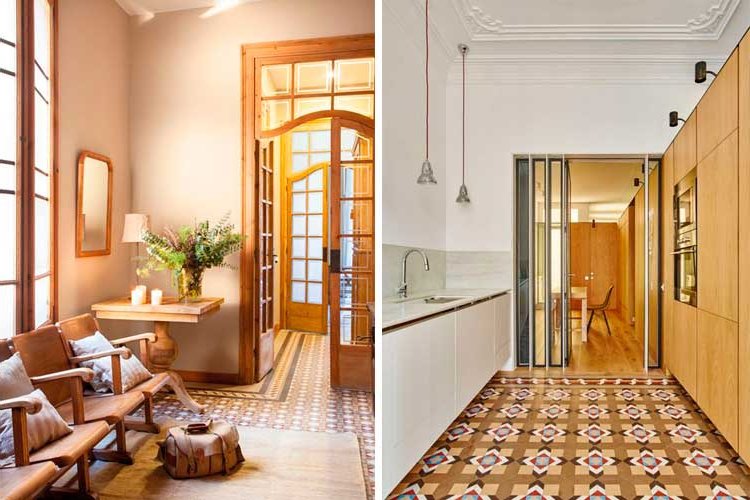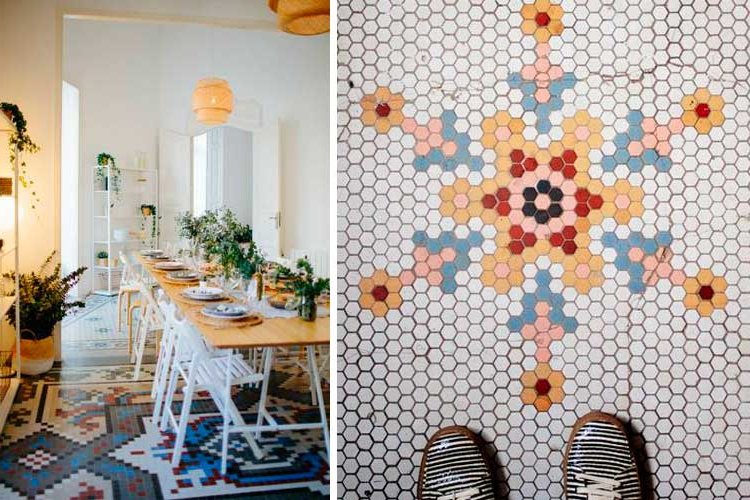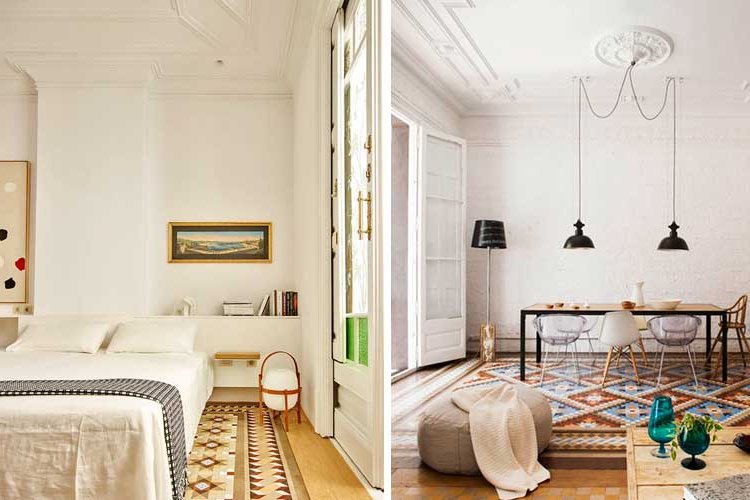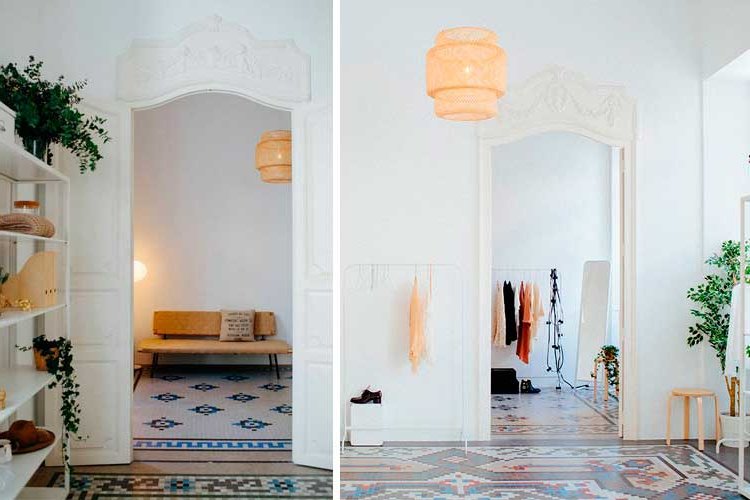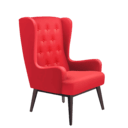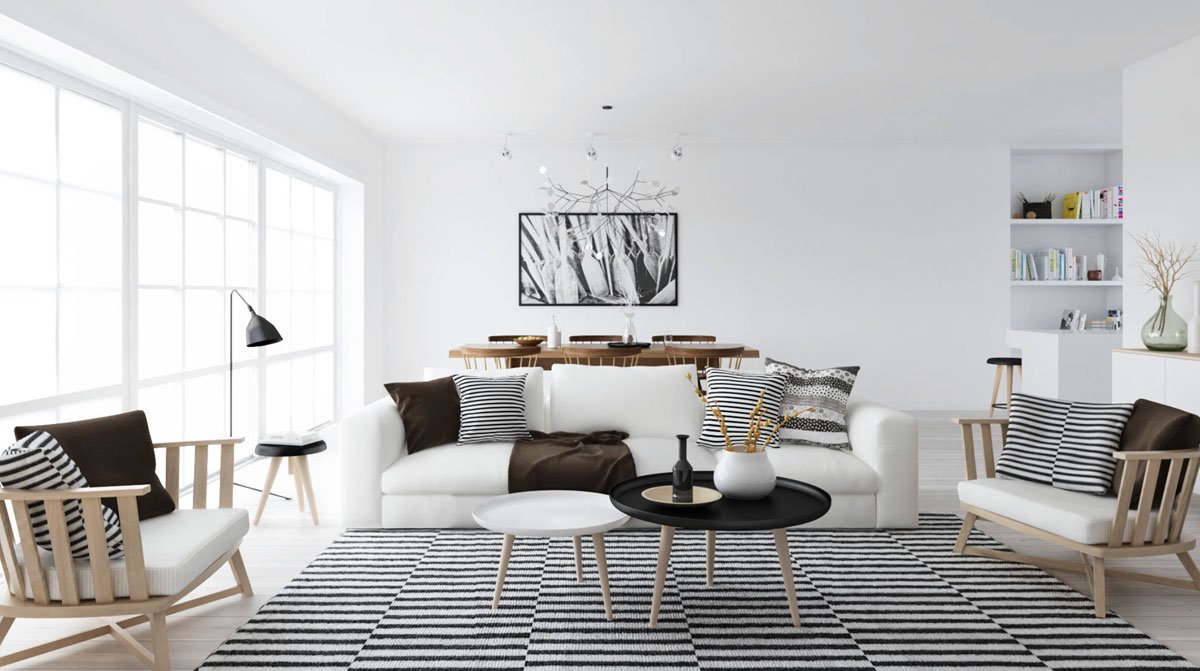Spectacular Nolla mosaic surfaces
One of the most pronounced trends in recent years in floors and pavements in homes is the use (or recovery) of Nolla mosaic, a high quality ceramic pavement born in Meliana (Valencia) by the businessman Miguel Nolla and produced since the mid-nineteenth century.
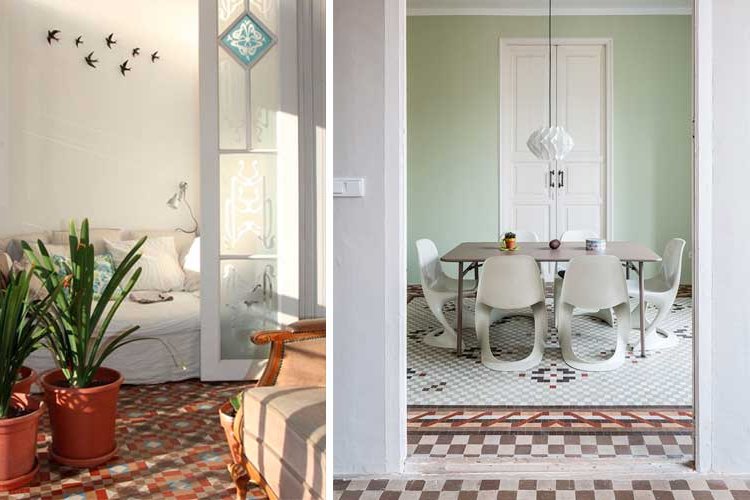
Although it is similar to the hydraulic tile (and in fact shares with it its presence in modernist style houses and in environments linked to the Catalan and Valencian coast), the truth is that they are different things and it is convenient to clarify their differences, as they are often confused.
The characteristic hydraulic tile has a typical format of 20x20cm and contains a pattern on the tile itself, so that it can often work alone creating repeated patterns of patterns or in combination with others to form a larger pattern,
However, the Nolla mosaic is basically a tesserae of about 4x4cm monochrome that allows the formation of patterns and drawings through its combination with other tesserae of different tones. Sometimes the tessera itself carries an inlay (encaustic pieces) or a drawing but it is usually minimal, usually based on two-tone triangles that favor the creation of more elaborate designs.
Working with Nolla mosaic is obviously more expensive and laborious than with hydraulic tile, since it is necessary to place tesserae by tesserae, taking care to follow the correct pattern, while hydraulic surfaces are easier to lay both because of the size of the tile and the pattern itself.
Today, with the rise of the modernist style and the recovery and respect for the original elements found in apartments to be renovated, the Nolla mosaic is living a second youth, revaluing the houses in which it is present and giving them a lot of personality.
As a pavement, it is very resistant and easy to clean, and at a decorative level it is a real jewel.
When decorating homes with Nolla mosaic, one of the things to keep in mind is that it is the floor itself that should stand out, so the furniture that accompanies it should be chosen in neutral tones or at most in the same chromatic range, without overloading the environment.
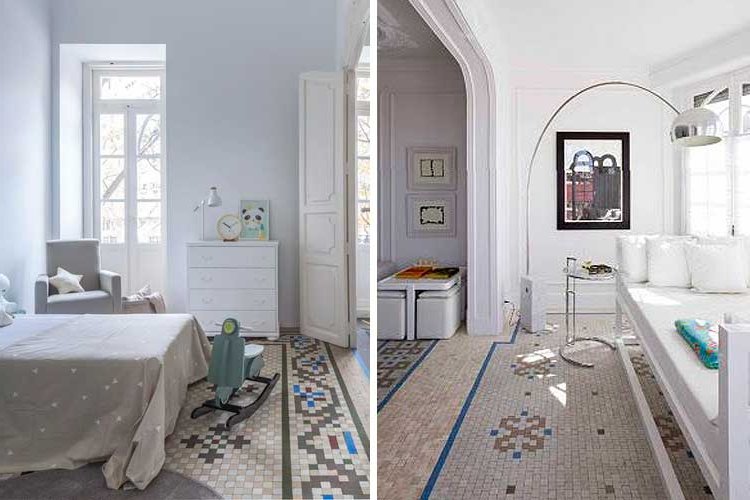
For this reason, as it is considered almost a jewel, we must take great care in the use of carpets, trying to avoid them whenever possible, or choosing them plain and in neutral tones to prevent them from blurring or stealing the limelight from the rest of the flooring.
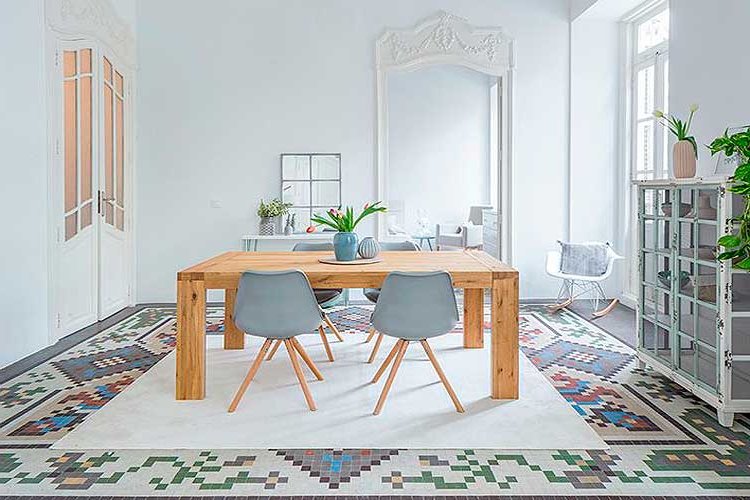
Regarding their applications, they can be easily applied in the living room, framing the seating area and coffee tables, enhancing their character.
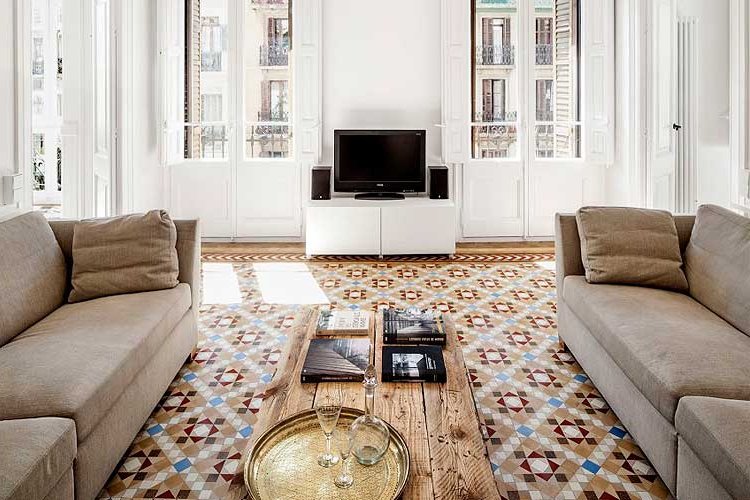
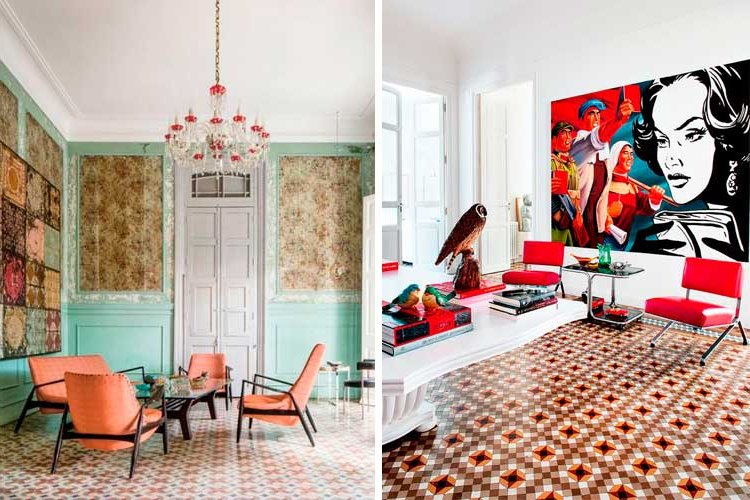
Dining rooms, on the other hand, are ideal for its application, since here pile carpets are usually counterproductive both in terms of cleanliness and discomfort when moving chairs, which is avoided with the use of Nolla mosaic.
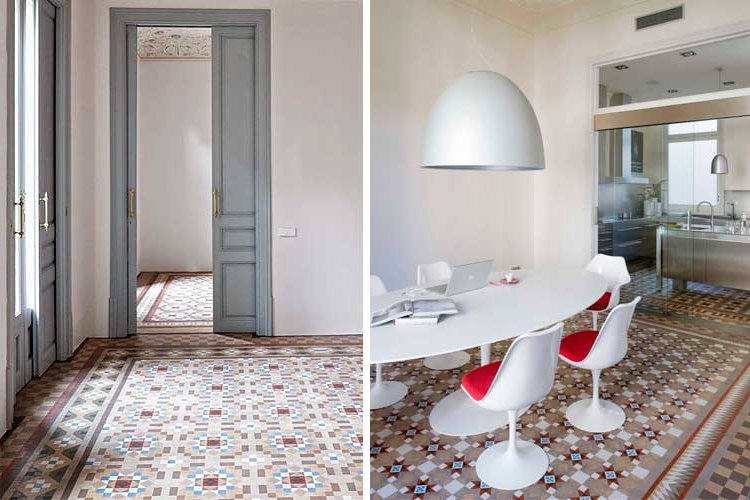
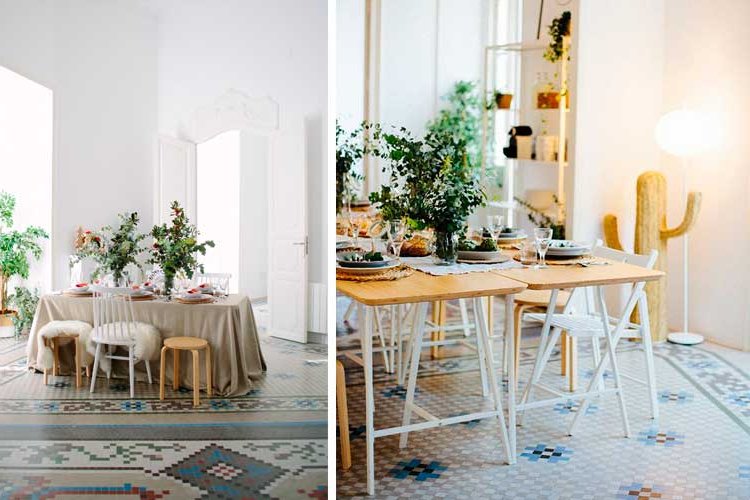
They can also be used in entrances and hallways, giving them a lot of strength, especially when the rest of the walls and woodwork are in white tones.
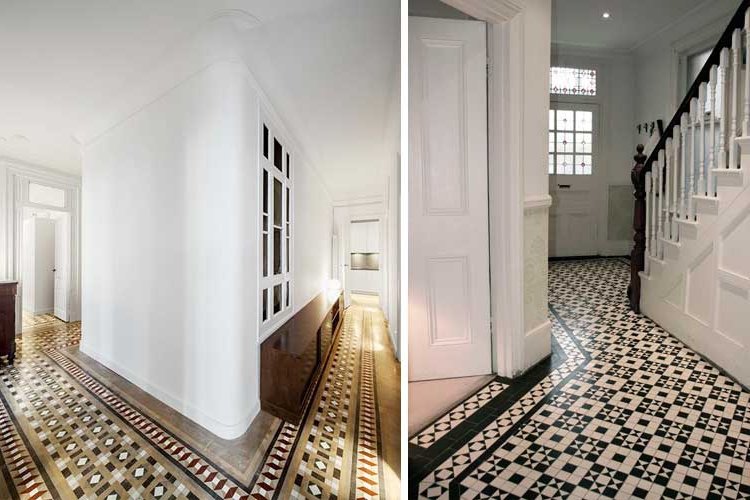
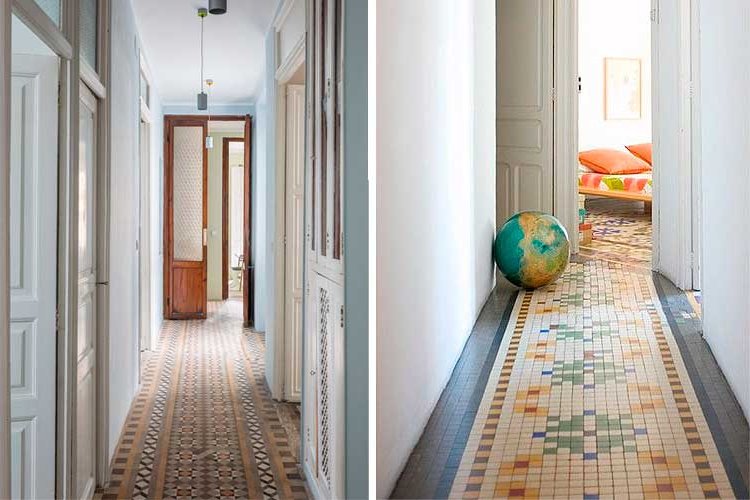
The master bedroom is another of its characteristic habitats, allowing the creation of visual carpets that frame the beds, enhancing the whole. However, care must be taken with the bedding, avoiding patterns and large color combinations that mitigate the presence of the floor.
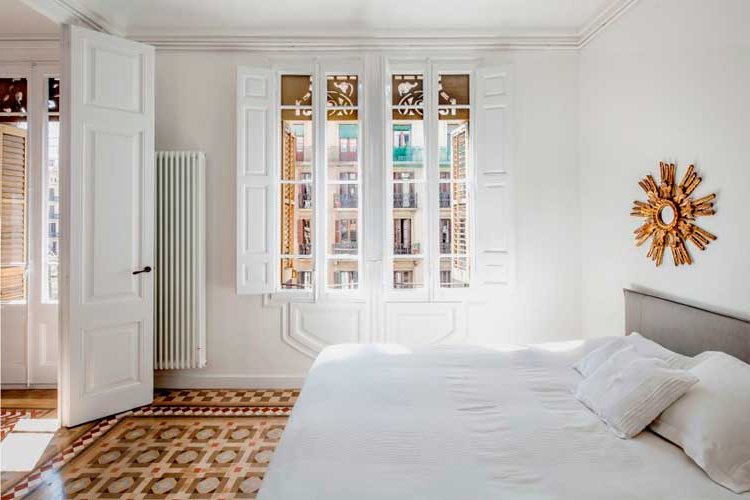
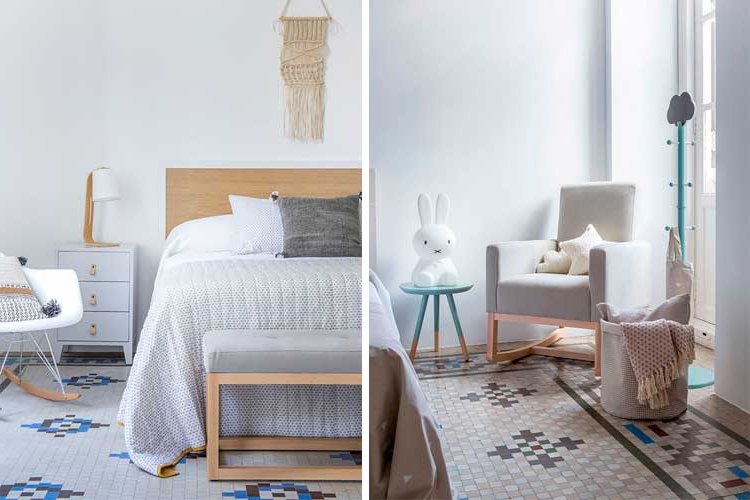
Of course, bathrooms and kitchens do not escape its influence, being a very interesting material as it is extraordinarily resistant and completely compatible with humidity.
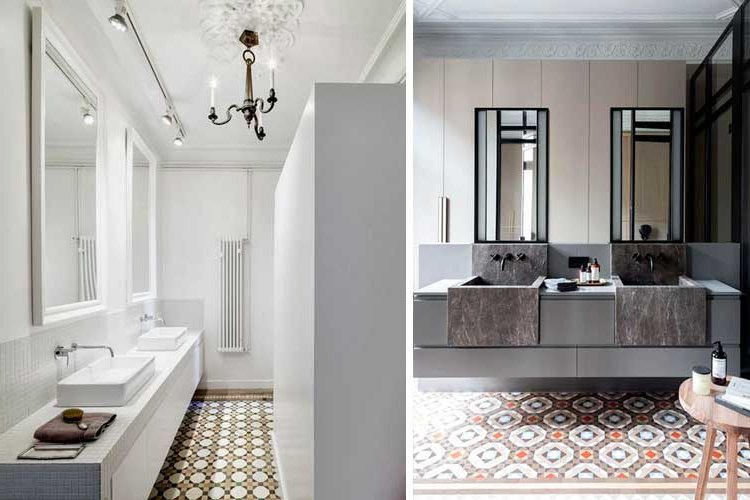
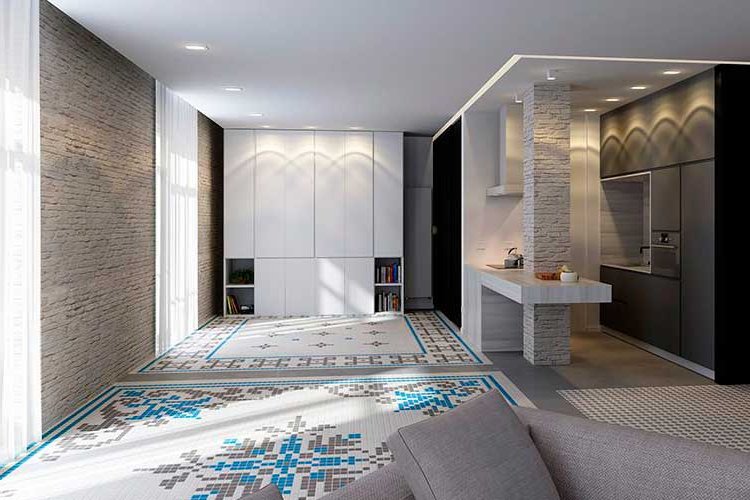
Regarding the most characteristic tones of the Nolla mosaic, the most common are on the one hand the reddish and brown tones, the former being cheerful and the latter elegant...
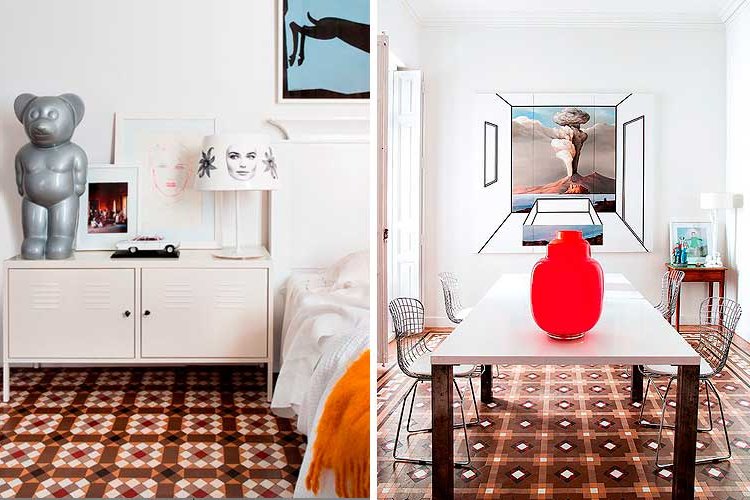
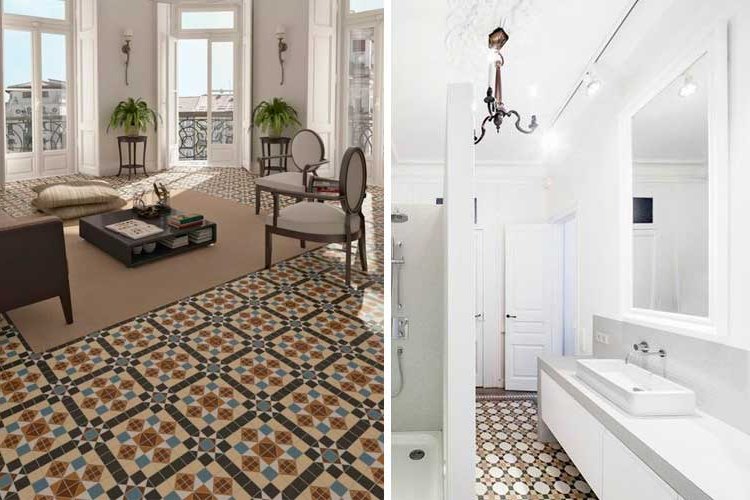
and on the other hand, those that combine beiges and blues, which tend to give the atmosphere a more romantic and relaxing character.
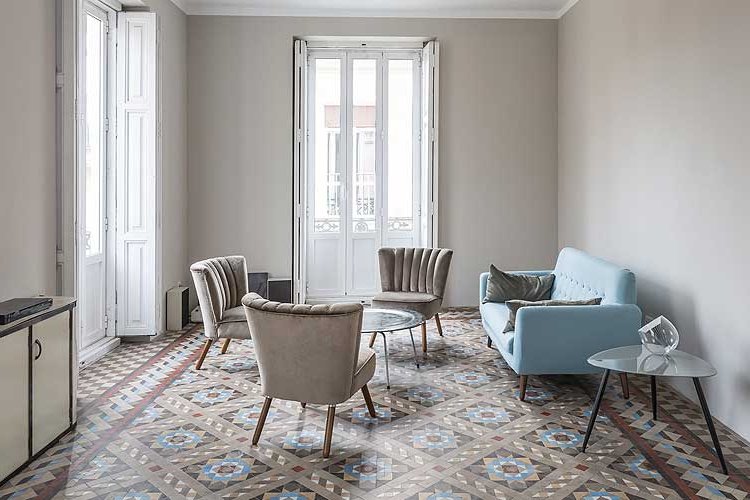
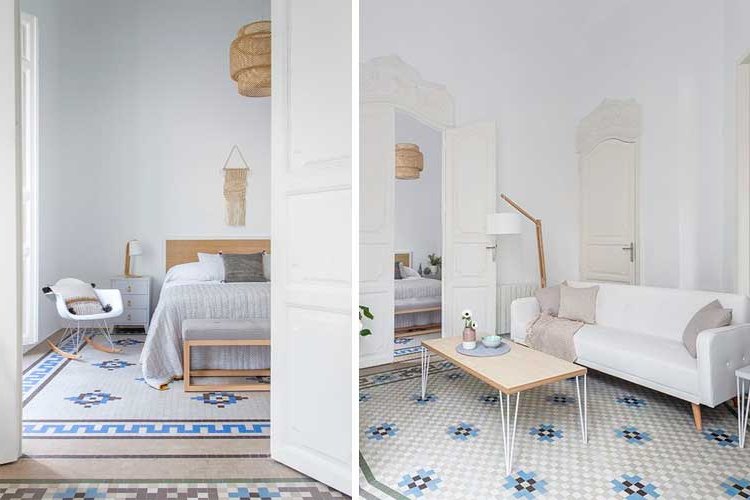
As for how to apply them, you can choose to cover the entire floor with the same pattern or create borders around it to give it a carpet aesthetic.
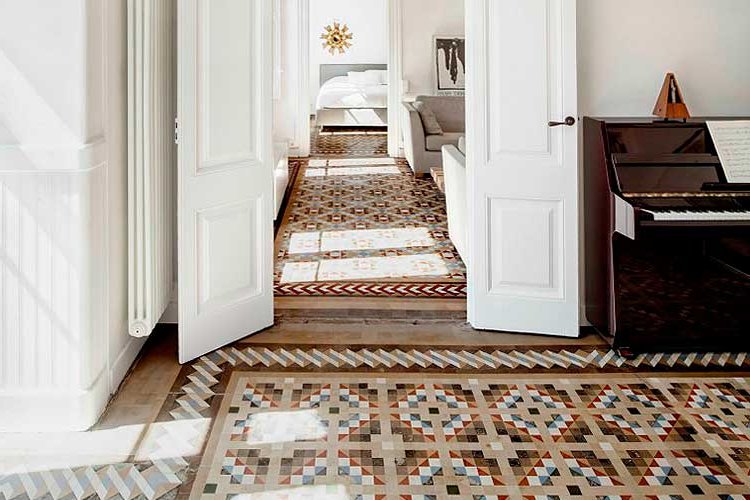

On the other hand, you can opt for the creation of drawings based on continuous patterns that fill the pavement...
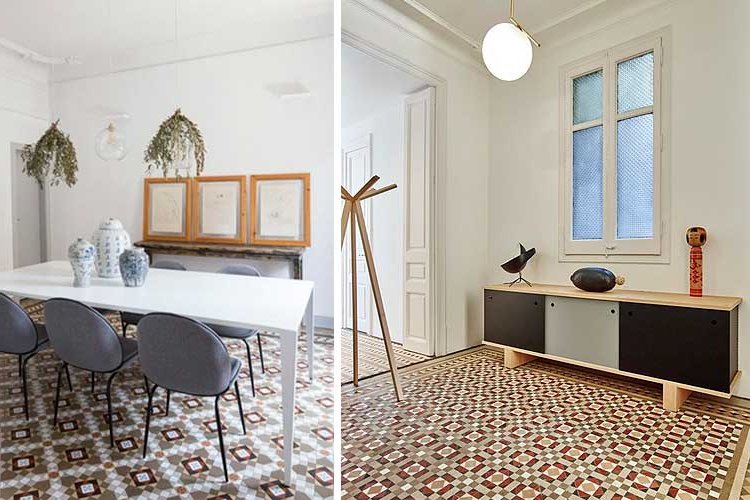
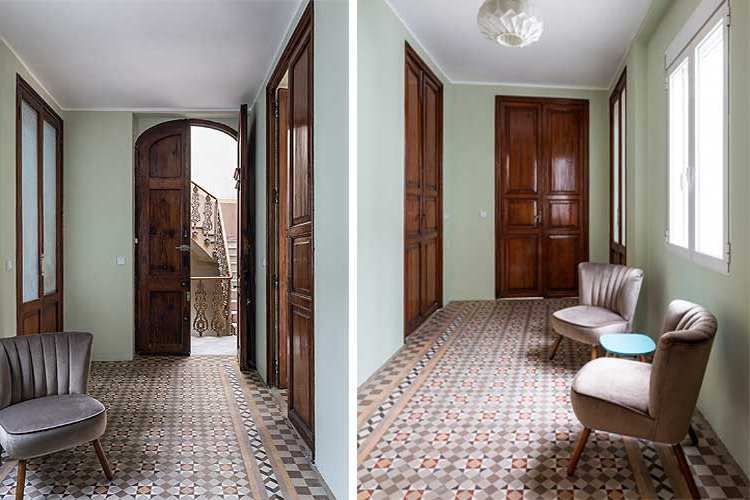
...or opt for the presence of neutral-toned tesserae as a base, occasionally dotted with a small pattern.
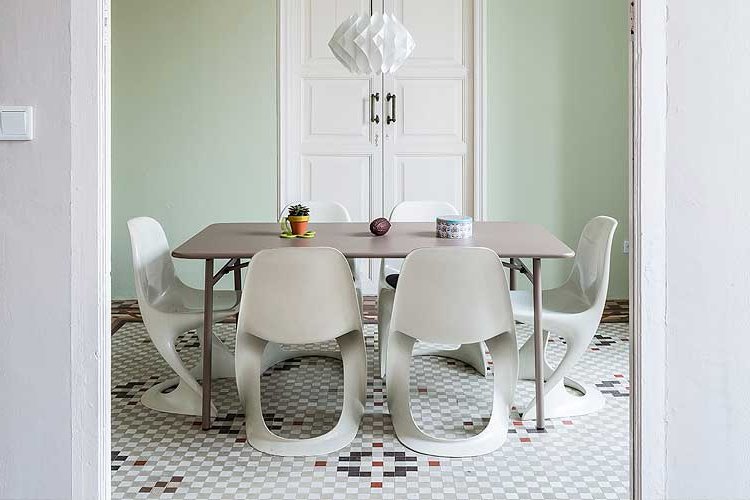
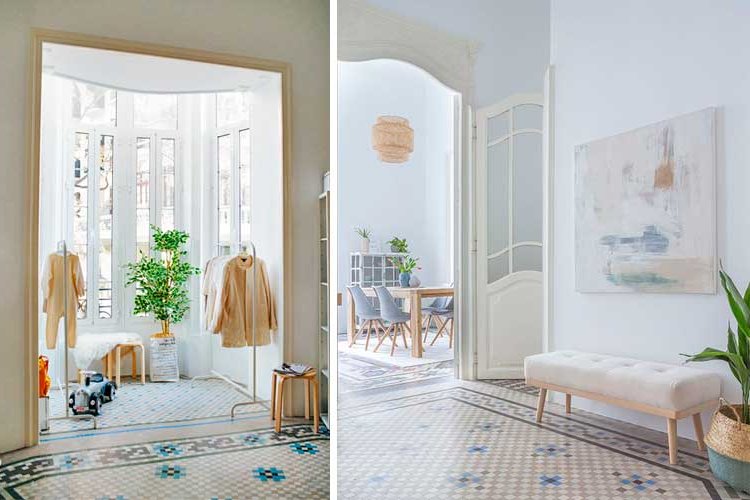
The Nolla mosaic is also very suitable in combination with other compatible materials such as microcement, polished cement and other original elements of the space, such as brick or exposed beams, creating very interesting spaces.
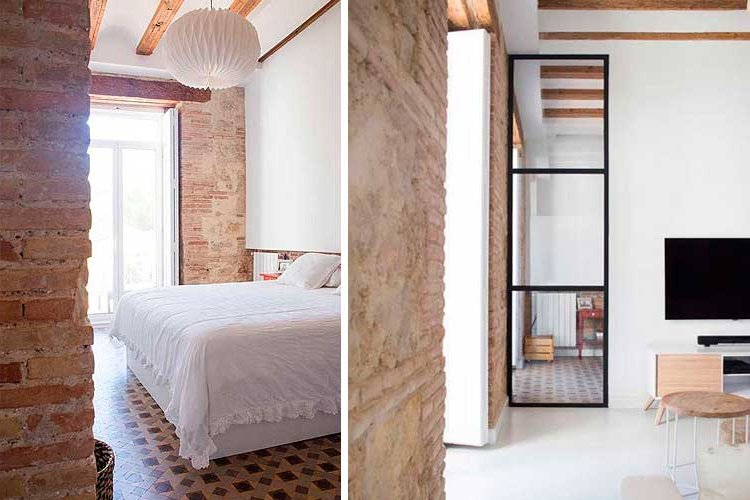
Children's rooms do not escape their presence either, giving them a colorful and fun look very much in keeping with their dwellers.
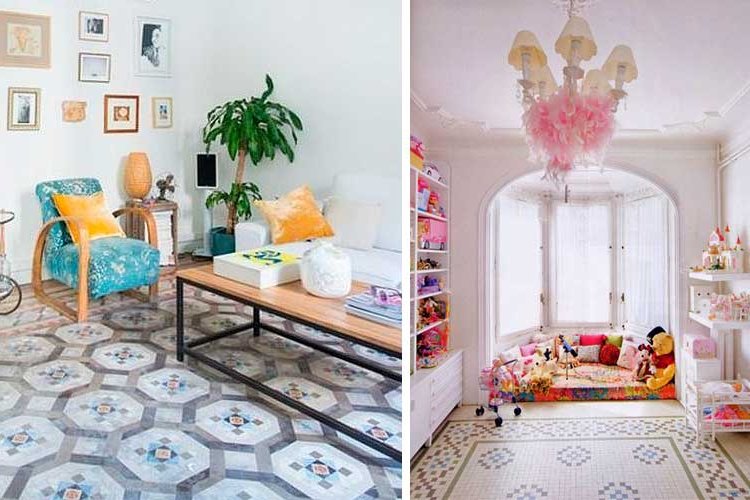
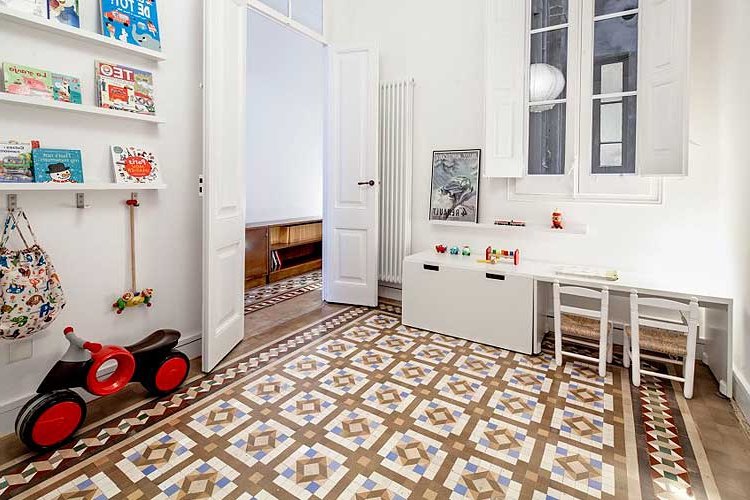
In short, a whole host of virtues for impressive, practical and extraordinarily beautiful surfaces, don't you think?
